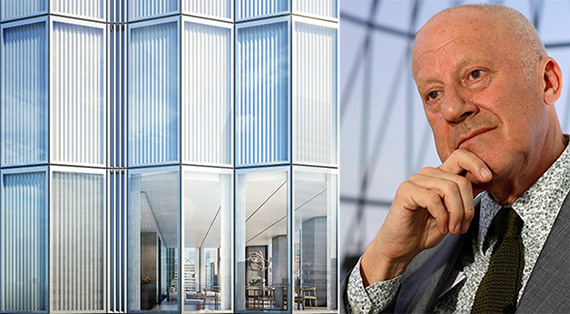What a difference seven months makes.
Prices at China Cinda and Aby Rosen’s luxury condominium at 100 East 53rd Street are up 16 percent on a per-square-foot basis since the building’s first condo plans were filed with the Attorney General’s office.
Overall, the Norman Foster-designed tower will have 94 units with an average asking price of $4,623 per square foot, according to the offering plan, which was approved by the attorney general in October.
An earlier draft of the plan, filed in March, called for prices just over $4,000 per square foot.
The building’s total sellout of $866.1 million is also up, by some 14 percent, from the initial $761.8 million sellout. And the top penthouse at the building — a glassy tower located next to the iconic Seagram Building – is also asking a premium. The pad is currently priced at $65 million, or $9,615 per square foot, compared to the original plan’s penthouse, which was asking $55 million, or $8,136 per square foot.
The least expensive unit — a 1,140-square-foot, one-bedroom pad on the fifth floor — is asking $3.5 million.
The long-stalled project was jump started last year when Rosen’s RFR Holding brought on Houston-based Hines and China Vanke, the largest publicly traded developer in China, as partners. In March, China Cinda paid $140.5 million for a majority stake in the project.
Sales will officially launch in January, according to Leonard Steinberg, president of Compass, which is marketing the units.
No matter the price, buyers will have their window treatments selected for them.
All of the residential units will be delivered with “white pleated drapes” that must be used, according to the offering plan. If residents want to add blackout shades, the window treatment must be added inside the drapes “so that when the shades are drawn or curtains drawn, the effect from the outdoors is a visually harmonious appearance.”
Likewise, residents may not apply films to the surface of the window “whether used for reducing glare, cutting down heat gain, providing light altering characteristics or for any reason whatsoever.”
